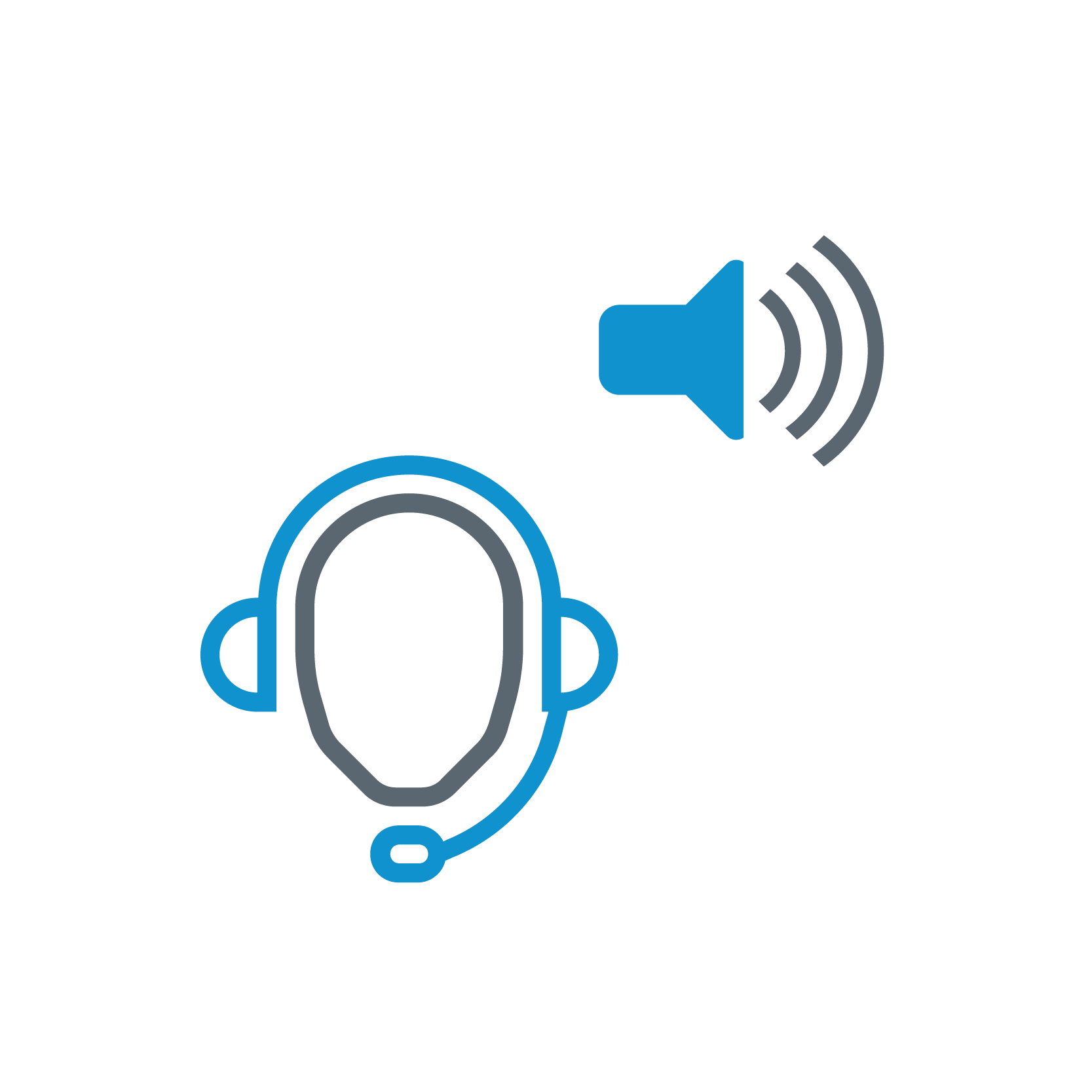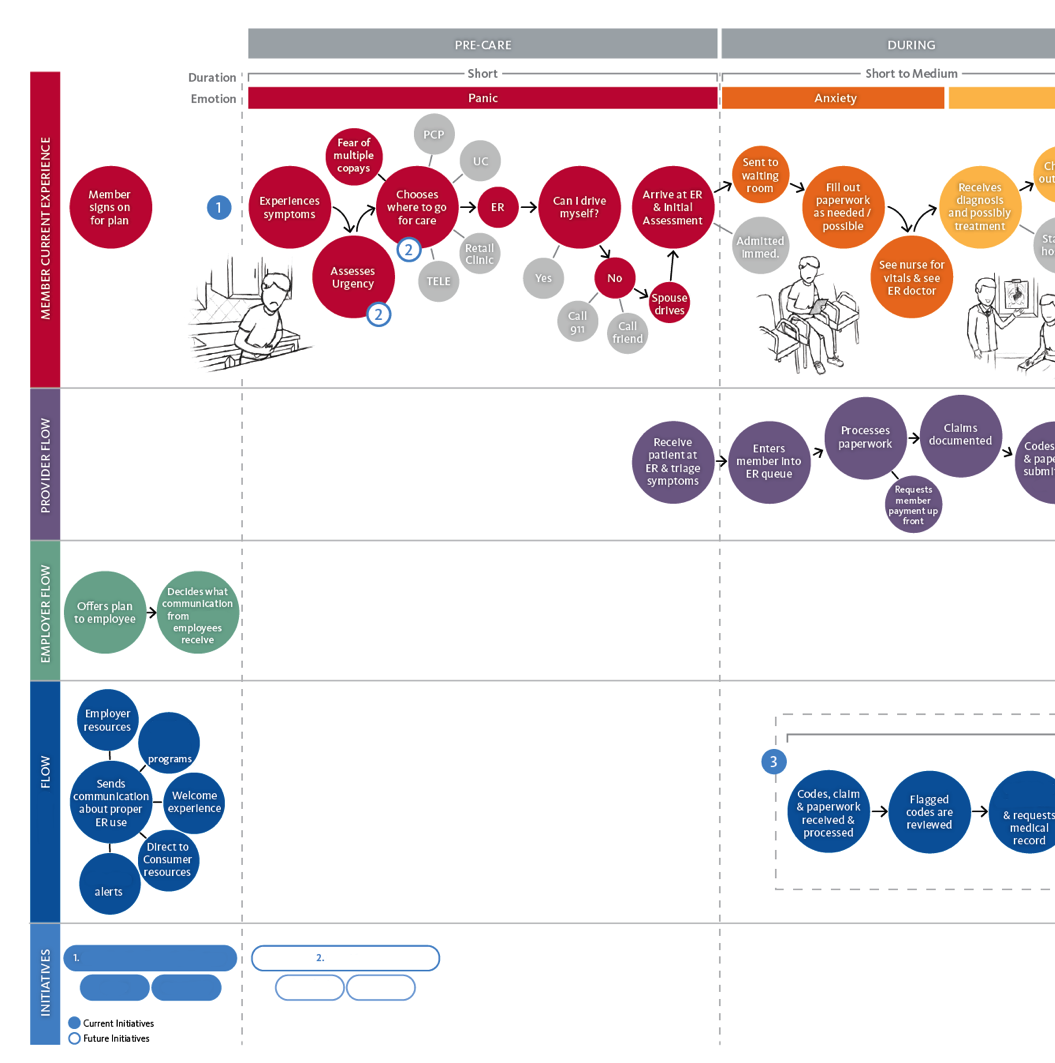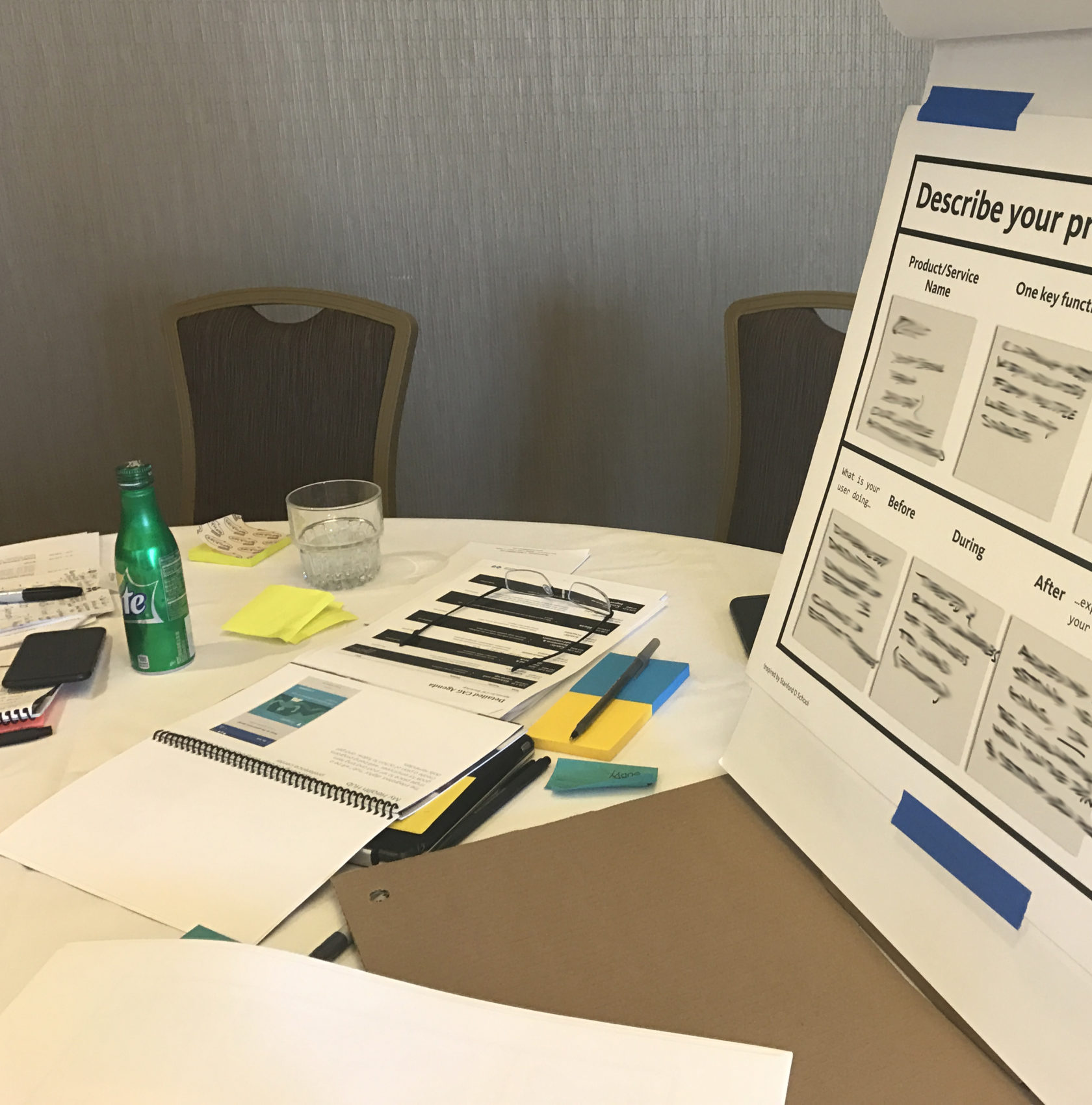Should I visit the ER?
In an effort to reduce costs associated with ER visits, the CX team brought stakeholders from the strategy team together to define opportunity areas and ideate solutions. This was a major strategic effort for the business because of the recent rise in ER visits for conditions that did not require emergency care and the major pain that it was causing members when they received large bills they didn’t understand or when they had to submit documentation to support their claim.
Presentation documents are available upon request.
Role: Project Lead, Design Researcher, Co-Design Facilitator
Understanding the problem
The process to submit documentation to the insurance company to support their use of the ER and claim was stressful for members and required high effort on their behalf to complete.
As researchers, we had limited direct access to members because recruiting for this topic was discouraged. When we weren’t able to directly speak with our members, we found a creative way to get qualitative data to support the quantitative data we already had by using voice recordings from Customer Service calls. They were rich with emotion and detailed accounts of their experience.

Mapping the experience
To help paint a picture of the experience for our members, we drew a comprehensive journey map that included the member steps and decision points using a storyboard and then aligned below all of the process participant steps below. In addition to the key steps and touchpoints, we included an estimate of how long members were experiencing each step and any company initiatives that could impact the experience. This map was used during the workshop to help fill in any gaps from the Anthem perspective, and identify key moments where solutions were essential to improving the member experience.

Ideating together
A workshop brought together key members from the strategy team to figure out solutions that were valuable and could be done with minimal financial investment.
Since members were not present at the workshop, it was key for me to develop activities that would really put the strategy team in the member’s shoes. As a warm-up activity, we had the team figure out where they would need to go to get the right level of care their condition required. Putting on bandages and other props helped the team develop empathy during this activity and a discussion after helped set the tone for the rest of the workshop.
Using the journey map was our anchor, the team collectively decided what two areas were appropriate for solution design. The rest of the workshop was focused on solution development and determining the next steps to keep the solutions moving forward.

